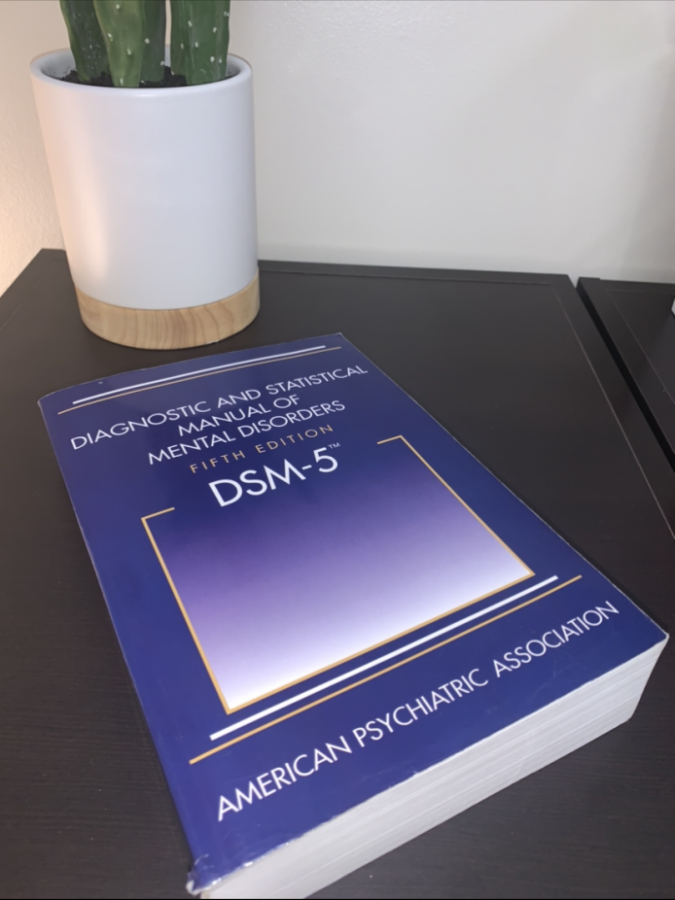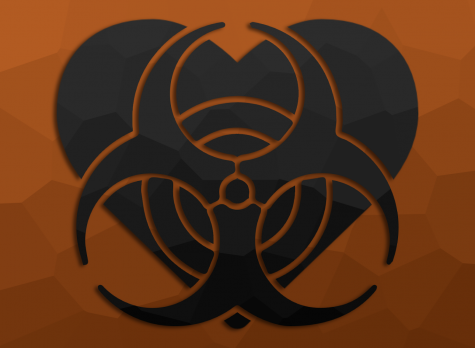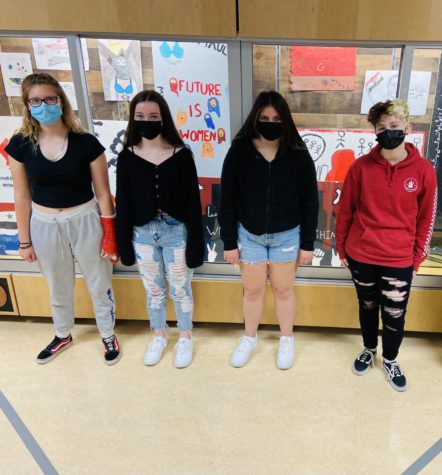Why teachers and staff in schools should have mental health training before becoming educators
Students should have a multiple people they can go to when they have issues, and these school members should be trained to take care of students
Although the counselors at MHS are focused on academics, students can still go to their counselor for help.
December 3, 2019
This is The Mav’s second editorial, a piece written on behalf of the publication’s editors about an issue they feel is important and have an agreed-upon stance. We chose this editorial topic because we, as editors, believe that teachers need to be informed to help students who may feel alone in their struggle. These articles are meant to persuade readers and to promote critical thinking and sometimes encourage people to take action.
It’s not uncommon for a student, at some point in high school, to struggle with mental health which can range from stress, to anxiety, to a number of other issues related to school or home which impact their mental health.
While a teacher is going through college, they should be required to have mental health training in order to prepare them for problems that may happen in the future.
“Addressing mental health needs in school is critically important because 1 in 5 children and youth have a diagnosable emotional, behavioral or mental health disorder and 1 in 10 young people have a mental health challenge that is severe enough to impair how they function at home, school or in the community,” says the Association for Children’s Mental Health.
Because of the number of students that suffer from mental health conditions, schools play an important role in the treatment of students. School is where students spend a large amount of their time. School can also be one of the largest stressors for students. Oftentimes, copious amounts of homework, tests, projects, peer pressure, relationships with other students/family, and other parts of school work can cause acute stress for students.
Additionally, what many adults may not realize at this time is that we struggle with the trauma involved in national incidents such as school shootings or even local threats which lead to school evacuations.
Although a few staff members have mental health training, it is important that all staff members in the building have at least some mental health training so that when a student is having problems, they can go to the trusted adult regardless of their school position. This trusted adult can be a bridge between the student and a mental health professional in or outside of their school.
If a student has any mental health issues (anxiety, depression, Bipolar disorder, etc), they are going to need help with managing these challenges while they are at school. For example, if a student has a panic attack in the middle of class, that student needs to have adults they can go to whether that person is a teacher, administrator, counselor, or school health official.
However, the concern with this solution is if a student’s trusted adult is a teacher, they may have a class when that student is in need or be in a meeting.
One possible solution to consider is having a plan for when a teacher needs to leave their class to help a student. This plan could include another teacher who can cover their class (who has a planning period), an administrator who could cover the class, or another staff member (counselor, SRO, etc). While contracts inhibit the school from taking away a teacher’s entire plan period, there is time allotted for times teachers could perhaps be available to help cover in a situation where a student is in dire need. Also, at any given time there are between 6-12 teachers on plan, so it is likely they could step in and help.
In recent years, Mead High School has worked hard to implement the suicide prevention program Sources of Strength. Sources of Strength works as “a universal suicide prevention program designed to build socioecological protective influences around youth and to reduce the likelihood that vulnerable youth/young adults will become suicidal.” Because this program does a good deal to help prevent certain hardships it encourages prevention as an effective strategy; however, there are times where it is too late for prevention and the situation must be dealt with at that moment.
Additionally, providing mental health education can not only benefit those suffering from mental illness, but also the other students in the class. According to an article published in 2014 “large, population-based studies surveying psychotic symptoms among adolescents have found rates of 9%–14% in interview-based studies and rates greater than 25% in some studies using self-report questionnaires.” In situations where a student may be suffering from psychosis, they could lose touch with reality and this could significantly impact their classmates and a teacher with training in this situation could protect all those involved.
Lastly, teachers and school officials (all those involved in a child’s education) have a duty to protect their students, and this should not exclude mental illness. It’s important that every student feels like they have a trusted adult to go to because not everyone has a parent or guardian to support them at home. By requiring teachers to have mental health training, we can ensure that every student will have someone they can go to if they’re struggling and fighting the invisible battle that is mental illness.













Erin Warren • Jan 24, 2020 at 11:07 am
Great article! I love the idea of mental health training for teachers. However, I am not a fan of having teachers leave classes that they are teaching. I have no problem helping a student before or after school or during my planning period but my time in class is precious. It is my job to make sure that this current generation is ready to engage in civic life, I can’t do that with a substitute in a room.
Rachel Long • Dec 4, 2019 at 11:18 am
I had to think on this for awhile before responding. First, great editorial. It is thought provoking and should start some good discussion. However, I do not necessarily agree with you. I think it is a good idea for everyone to get basic Mental Health First Aid training to know how to react in a crisis situation (I have taken this course, and it is excellent), but I do not think teachers should be required to act as mental health counselors. Teachers already have a lot on their plates. They are caring adults who are passionate about their students, but it is not, nor it should it be their jobs to be counselors as well. I also do not feel they should be expected to drop everything in the middle of class to respond to another student in crisis. Doing so would also effect the rest of the students in the classroom who would be missing out on learning time. Students in crisis have access to counselors, or if counselors are not available, an administrator who can assess their situation and get appropriate services as needed. Again, I love that you are all thinking about the issue of teens and mental health and trying to come up with solutions. If anyone is looking for more discussion on teens and mental health, Colorado Public Radio has a great series about it right now. You can see all of the articles and listen to their podcasts at http://widgets.cpr.org/teens/index.html
Emily Young • Dec 4, 2019 at 9:09 am
As a parent, I completely agree!! Us adults must do better at helping students navigate mental health issues. That being said, teachers are expected to do so much nowadays. I would love to see less emphasis on test scores and more emphasis on addressing the whole student- mental health being a big part of that equation. Excellent writing, guys! I’ve thoroughly enjoyed the articles being produced from your paper- thought/provoking, non-fluff. Great job!!
Pam Rogers • Dec 3, 2019 at 6:28 pm
Excellent reporting! Mead journalism is above par!
Teresa M • Dec 3, 2019 at 5:15 pm
What a great idea!! The more capable/ trained the teachers are the more likely they’ll feel confident in helping their students.